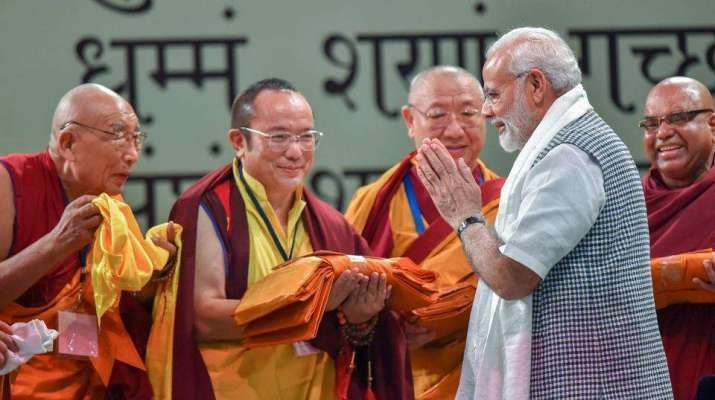India, the birthplace of Buddhism, is a land steeped in rich spiritual heritage and cultural traditions. Although Buddhism originated here over 2,500 years ago, its legacy remains vibrant today, especially through the many Buddhist festivals in India celebrated with deep devotion and colorful ceremonies. These festivals not only honor the life and teachings of the Buddha but also serve as a platform for cultural exchange, spiritual renewal, and communal harmony. This article explores some of the most important Buddhist celebrations in India, highlighting their cultural significance, rituals, and the role they play in preserving Buddhist heritage.
The Importance of Buddhist Festivals in India
Buddhist festivals in India are much more than just dates on the calendar; they are profound occasions that connect followers to the spiritual core of Buddhism. These celebrations commemorate key events in the Buddha’s life, such as his birth, enlightenment, and passing away (Parinirvana), while also emphasizing the values of compassion, mindfulness, and peace.
Moreover, these festivals provide an opportunity for the community to come together, practice religious rituals, chant scriptures, and engage in acts of charity. The vibrant ceremonies also attract tourists and pilgrims from around the world, contributing to the cultural tourism and spiritual economy of the regions involved.
Major Buddhist Festivals in India
1. Buddha Purnima (Vesak)
Buddha Purnima, also known as Vesak or Buddha Jayanti, is the most significant festival celebrated by Buddhists across India and the world. It marks the birth, enlightenment, and death of Gautama Buddha, all of which are believed to have occurred on the full moon day of the month of Vaishakha (usually April or May).
On this day, devotees visit temples and monasteries, offer flowers, light lamps, and participate in meditation sessions. Special prayers and sermons recount the Buddha’s teachings, inspiring followers to live with compassion and wisdom. In key pilgrimage sites such as Bodh Gaya (where the Buddha attained enlightenment), Sarnath, and Kushinagar, grand celebrations and processions draw thousands of devotees.
2. Dhamma Chakra Pravartan Din
Observed mainly by followers of Dr. B.R. Ambedkar, who championed Buddhism among India’s marginalized communities, Dhamma Chakra Pravartan Din commemorates the day Ambedkar embraced Buddhism along with his followers in 1956. It marks a contemporary revival of Buddhism in India and is especially celebrated in Maharashtra, Gujarat, and other regions with large Neo-Buddhist populations.
The festival involves chanting of Buddhist scriptures, public lectures on the teachings of Buddha and Ambedkar, and community meals. It symbolizes social equality and empowerment through spiritual practice.
3. Lumbini Day
Though Lumbini is located in Nepal, the birthplace of the Buddha holds immense significance for Indian Buddhists. Lumbini Day is celebrated with religious fervor in many Indian Buddhist communities, particularly in the northern states bordering Nepal.
The day involves pilgrimages, prayers, and cultural programs that honor the Buddha’s early life. Many Buddhist festivals in India reflect this connection to Lumbini, highlighting the shared heritage between India and Nepal.
4. Magha Puja
Magha Puja, celebrated on the full moon day of the third lunar month (usually February or March), commemorates a spontaneous gathering of 1,250 enlightened monks who came to hear the Buddha’s teachings. The festival is marked by rituals including candlelight processions, meditation, and recitation of important Buddhist texts.
While more widely observed in Southeast Asia, Magha Puja is gaining popularity in India’s Buddhist communities, serving as an occasion for reflection on ethical conduct and spiritual growth.

Cultural Elements and Rituals
Buddhist festivals in India are rich with symbolism and cultural expression. Common rituals include:
- Offerings: Devotees offer flowers, incense, candles, fruits, and sweets at stupas and temples, symbolizing respect and gratitude to the Buddha.
- Chanting and Meditation: Reciting Buddhist sutras and engaging in group meditation helps practitioners deepen their connection to the Dharma (Buddha’s teachings).
- Processions: Colorful processions featuring monks, devotees, traditional music, and dances are an integral part of major celebrations.
- Monastic Ceremonies: Monks perform rituals such as blessings, circumambulation of sacred sites, and almsgiving, reinforcing the spiritual atmosphere of the festivals.
- Community Feasts: Many festivals end with communal meals, reinforcing social bonds and the spirit of generosity.
Regional Celebrations and Unique Traditions
India’s Buddhist festivals are diverse, reflecting the country’s vast cultural landscape. For instance:
- In Bodh Gaya, the Maha Bodhi Temple becomes a hub of activity during Buddha Purnima, with international pilgrims joining local devotees in ceremonies.
- In Sikkim and Ladakh, Tibetan Buddhist customs blend with Indian traditions, featuring cham dances (ritual mask dances) performed by monks.
- The Neo-Buddhist community in Maharashtra organizes large-scale events during Dhamma Chakra Pravartan Din, with speeches on social justice and Buddhism’s role in empowerment.
- In Northeast India, especially in Arunachal Pradesh and Meghalaya, indigenous Buddhist festivals combine animist and Buddhist rituals, showcasing the region’s unique spiritual tapestry.
Significance of Buddhist Festivals Today
In contemporary India, Buddhist festivals serve multiple important roles:
- Spiritual Renewal: They provide followers a chance to refresh their commitment to Buddhist values and practices.
- Cultural Preservation: Festivals keep alive ancient traditions, art forms, and languages associated with Buddhism.
- Social Cohesion: Through shared rituals and celebrations, these festivals foster unity and peace within diverse communities.
- Tourism and Education: They attract visitors, raise awareness about Buddhism’s heritage, and promote intercultural dialogue.
In a world often marked by conflict and division, Buddhist festivals in India stand as reminders of the enduring power of compassion, mindfulness, and harmony.
Conclusion
Buddhist festivals in India are vibrant, multifaceted celebrations that beautifully intertwine religion, culture, and community. Whether it is the grand observance of Buddha Purnima or the socially significant Dhamma Chakra Pravartan Din, these festivals offer a window into the spiritual heart of Buddhism and its continuing influence on Indian society.
For travelers and spiritual seekers alike, participating in these festivals provides a unique opportunity to experience Buddhism’s living tradition in its birthplace. They reveal how ancient rituals and teachings continue to inspire millions, fostering peace, understanding, and cultural richness across India.

